The Tigress of Forli (22 page)
Read The Tigress of Forli Online
Authors: Elizabeth Lev

Lead medal of Caterina Riario Sforza, Niccolò Fiorentino, c. 1488â1490
This medal was struck during Caterina's first years of ruling Forlì. The recto is a portrait of Caterina, while the obverse bears the motto
FAME FOLLOWS VICTORY.
 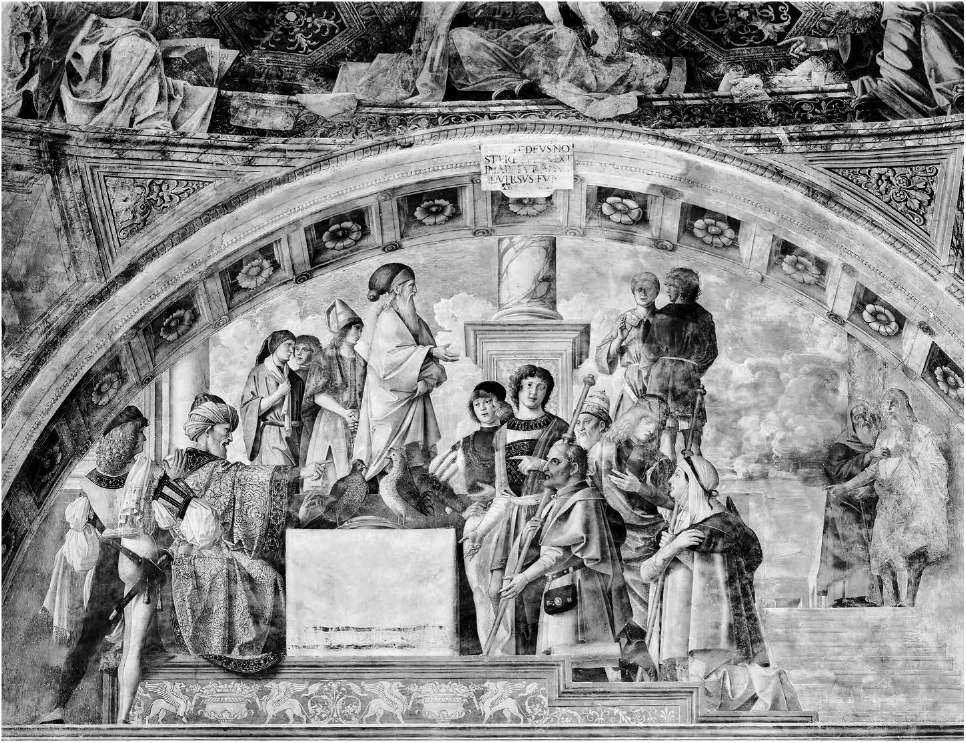
A detail from
The Miracle of Saint James the Elder
, from the Feo Chapel in the church of San Biagio, Marco Palmezzano, 1494â1495
These frescoes were destroyed in 1944, but photographs have preserved the image of Caterina's second husband, Giacomo Feo, standing in the center of the lunette, in front of the column. Ottaviano, her eldest son, is on the right, speaking to a kneeling Caterina. Girolamo, her first husband, kneels in front of Giacomo.
 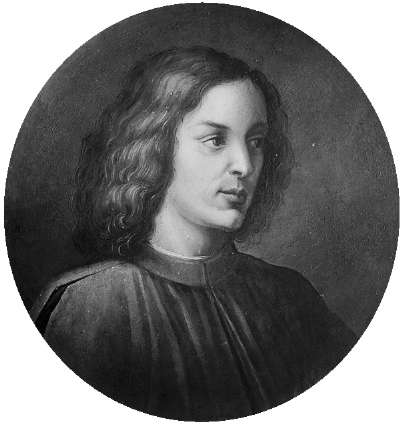
Portrait of Giovanni de' Medici
, Giorgio Vasari, 1555
Cosimo de' Medici commissioned this portrait of Caterina's third husband, Giovanni de' Medici Il Popolano, who died at the age of thirty-one. It was placed beside her portrait in the hall dedicated to Cosimo's ancestors in the Palazzo Vecchio.
 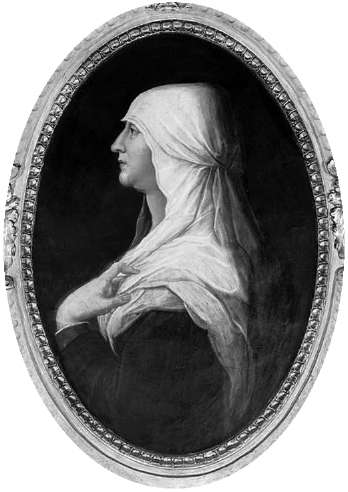
Portrait of Caterina Sforza de' Medici
, Giorgio Vasari, 1555
This portrait was commissioned by Cosimo de' Medici for the hall that he dedicated to Giovanni dalle Bande Nere in the Palazzo Vecchio in Florence. Vasari portrays Caterina in a widow's veil after the death of her third husband, Giovanni de' Medici.
 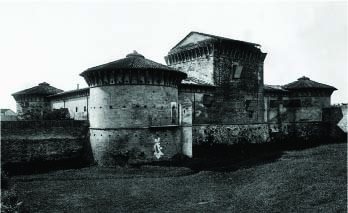
The fortress of Ravaldino
Caterina defended this fortress both in 1488 and 1500 and lived here for more than ten years. It later became a prison and after that, a tourist attraction.
 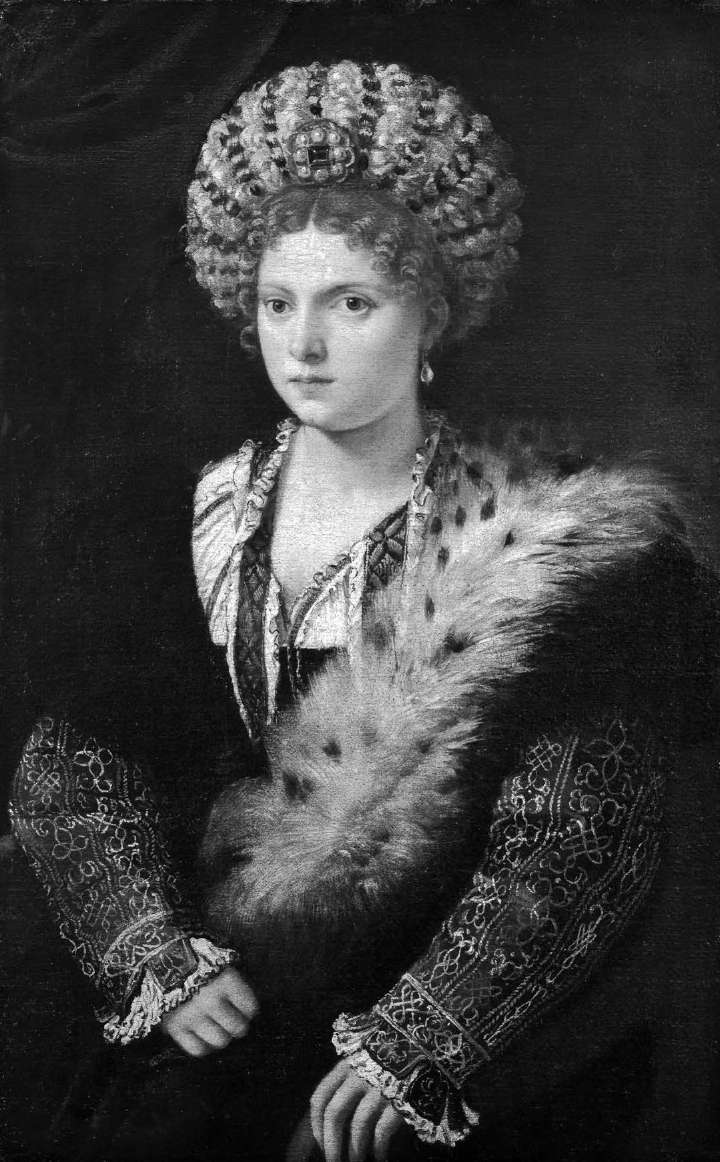
Portrait of Isabella d'Este, Marquess of Mantua
, Titian, c. 1535
Isabella d'Este, a contemporary of Caterina, was one of the most famous women of her day. Whereas Caterina earned her notoriety through military exploits, Isabella was renowned as an exacting patron of the arts. Nonetheless Isabella expressed admiration for Caterina's courage during her defense of Ravaldino against Cesare Borgia.
 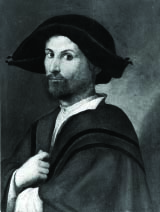
Portrait of a Man
, Girolamo Marchesi da Cotignola, c. 1500
This portrait, most likely of Cesare Borgia, was painted shortly after his conquest of Forlì. It hangs next to a portrait of Caterina, The Lady with Jasmine, in a special section of the municipal art gallery of Forlì.
 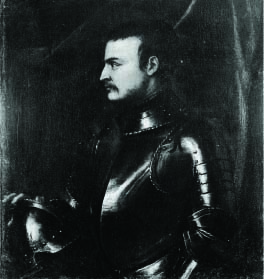
Portrait of Giovanni dalle Bande Nere
, Gian Paolo Pace, c. 1545
This portrait was commissioned by Pietro Aretino after the death of Giovanni, as a gift to Cosimo I of Tuscany. Giovanni, a celebrated condottiere, was Caterina's youngest son born from her marriage to a Medici. He died of battle wounds at the age of twenty-eight.
 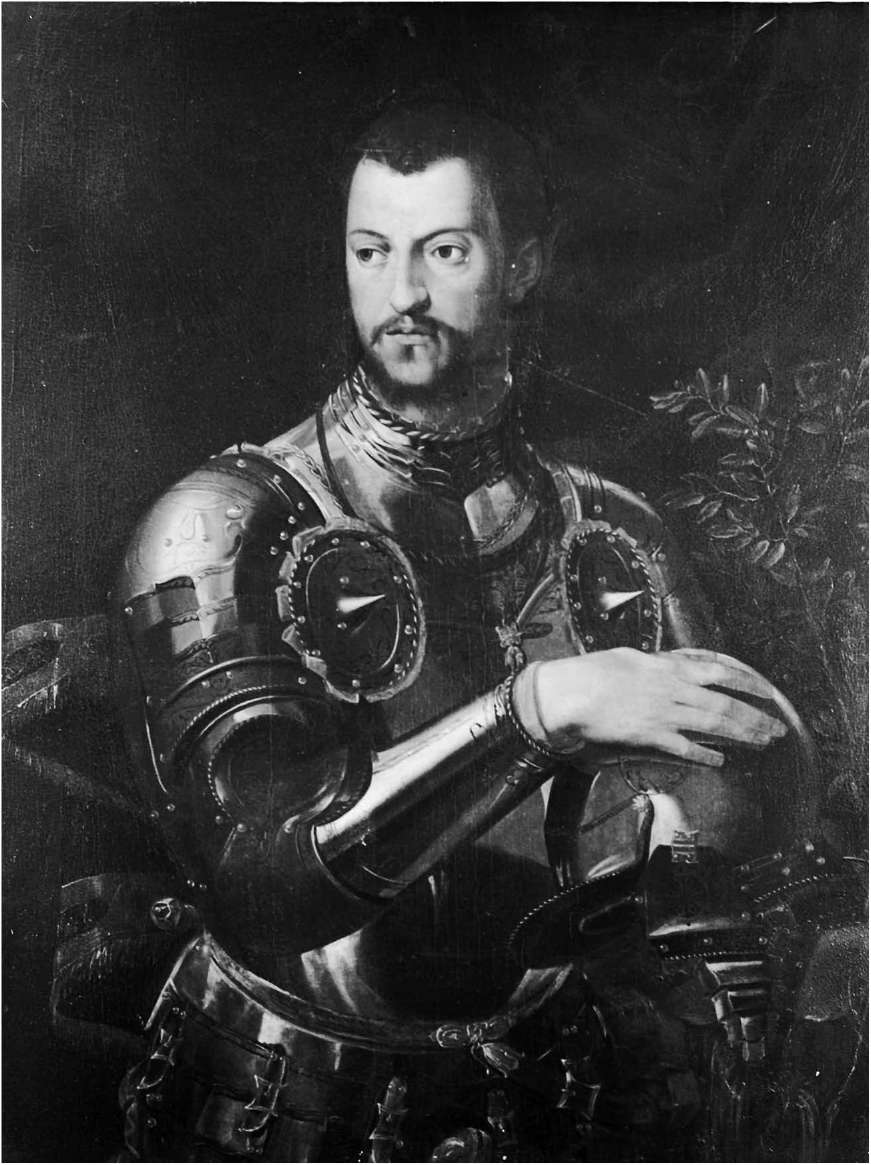
Portrait of Cosimo de' Medici
, Bronzino, c. 1545
Caterina's grandson Cosimo by her youngest child, Giovanni di Giovanni de' Medici, became the first grand duke of Tuscany in 1569. It was at his order that a marble tombstone was erected on the simple site of Caterina's grave.
S
WORDS DRAWN, GIROLAMO'S
assassins crowded into the chamber to find the countess embracing her children protectively; only a few tearstains betrayed her emotions. Snarling orders and spewing threats, the murderous crew lined up the little group of women and children. No one dared touch the countess, but one foolhardy ruffian grabbed Caterina's younger sister Stella and, claiming to search for hidden jewels, began to grope under her dress. She was not Caterina's sister for nothing; a crack echoed through the room as Stella replied with a stinging slap.
Surrounded by this rough escort, the family picked their way through the shambles of their home as more looters poured in. Out in the piazza, a broad crimson stain marked the spot where the body of Girolamo had lain. Mercifully, the corpse had already been removed before Caterina and family arrived there. Within minutes, they had crossed the threshold of the Orsi palace. Away from the eyes of the townspeople, Caterina knew they were completely at their captors' mercy. Yet she comforted her family, praying that the messages she had hastily dictated had arrived at their destinations.
The assassins had also sent riders off in every direction to notify neighbors and allies of their coup, counting on garnering support among the many enemies of the Riarios. The Orsis knew that they possessed neither the clout nor the might to impose their rule on the Forlivesi but hoped that a powerful state, such as Florence or Venice, might intervene to control the town, return the Ordelaffis to rule it, and ultimately reward Ludovico and Checco with high positions. Mere hours after murdering the count, the Orsi brothers convened an extraordinary meeting of the Council of Forty to discuss the next steps for the orphaned town. The representatives of the districts and guilds of Forlì gathered with trepidation in the great hall. Checco Orsi explained the reasons for his deeds, reminding the council that in that very room, Girolamo had broken his promise to abolish the
dazi
. Decrying the count's proclivity to violence and extortion, Checco even dared hint that Pope Innocent himself had blessed their actions, though the assassin wisely refrained from making an outright claim of papal complicity. Checco made no mention of the Ordelaffis, fearing the council might split into two factions: for and against the former ruling family. He did, however, allude repeatedly to both Venice and Florence. Forestalling any suggestion to invite any such greedy neighbors in, Niccolò Tornielli, the leader of the council and an older man who had lived through many years of Pino Ordelaffi's as well as Girolamo's rule, proposed a different course of action. He advised Forlì to put itself under the authority of the church. In this way, it could remain a relatively free ecclesiastical state, with a cardinal governor from Rome. The papal army would guarantee peace while they thrashed out the problem of succession. Tornielli, looking to the good of all the Forlivesi, expressed the hope that this equitable compromise would reduce the tension of the situation and, he added, avoid "breaking the heart of the countess any further."
1
These prudent words soothed the turbulent spirits of the Forlivesi. By nightfall the council had decided. They dispatched a messenger to Cesena, where the papal governor and protonotary Bishop Giacomo Savelli was installed. The papal stronghold was only thirteen miles south on the Via Emilia and, with a fast rider, the council could expect a response within two hours. Bishop Savelli, a member of the Savelli family of Rome, loathed Girolamo, and for good reason: the count had imprisoned his relatives, torn down their houses, and destroyed their property. Savelli was delighted by the news of his enemy's death, but he viewed the city's decision to submit to papal authority with skepticism. They had, after all, just murdered a former papal nephew. Fearing an uprising from the volatile people of Forlì, Savelli decided to send a trusted set of eyes and ears to the town to report on events. His emissary ascertained that the count was indeed dead, that the Orsis had taken Caterina and her family into custody, and that the council's proposal was serious. Forlì was ready to enter the papal fold.
